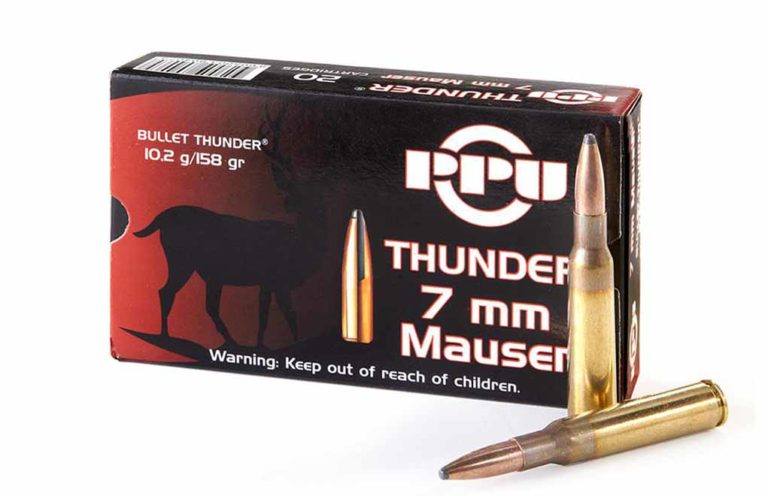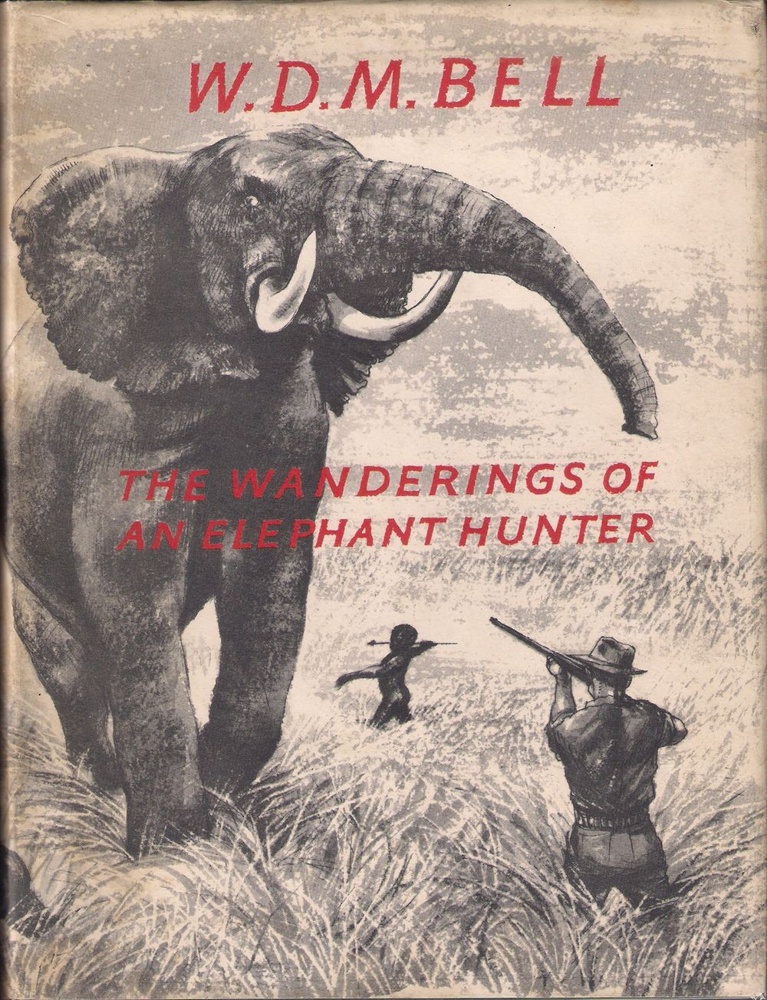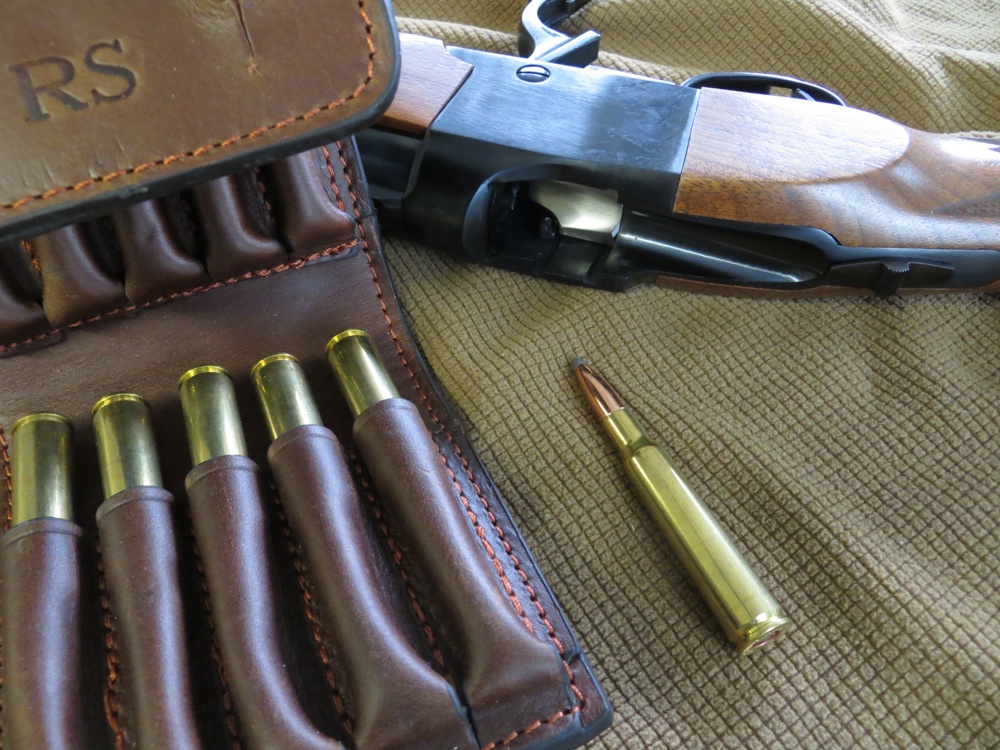

In 1892, Paul Mauser invented the 7x57mm Mauser, and since that day, the firearms world has never been the same.
What's Made The 7mm Mauser Such A Success:
- Mild to shoot, nearly any rifleman could master a gun chambered for the cartridge.
- Can be loaded with long, heavy-for-caliber bullets with high sectional density giving it excellent penetration potential.
- Proven inherently accurate in battle and on the hunt.
- Has been used successfully on all game, from varmints all the way up to elephants.
To say the 7mm Mauser was a success is an understatement. It’s a rifle cartridge that can practically do anything — and it practically has. From settling conflicts in Cuba to fighting off the British in South Africa during the Second Boer War, and from whacking coyotes, deer, elk, moose and bears in North America to stopping man-eating leopards and elephants in Africa, Mauser’s mild-shooting but pesky .284 caliber has always been the perfect ballistic recipe of form, function and accuracy.
In short, the keys to the 7mm Mauser’s success are the fact that it’s mild to shoot, it’s inherently accurate, and the fact that it can be loaded with long, heavy-for-caliber bullets with a very high sectional density has earned a reputation as a cartridge that hits well above its weight class because it penetrates so well. It’s even more capable today thanks to new faster-burning powders, .284-caliber bullets with much higher ballistic coefficients, and technological advances in firearms chambered for the 7mm Mauser. More than a century later, the 7mm Mauser is still very much in demand worldwide.
On-Target Ammunition Information:
- The Blistering Hot 30 Nosler
- The .280 Ackley Improved
- If You Had To Pick Just One Cartridge, What Would It Be?
- Loading the .308 Winchester
“I think the reason the 7mm Mauser keeps sticking around is because it has been chambered in rifles for over 120 years,” said Nosler’s Zach Waterman. “That’s a long reputation and a lot of rifles available throughout the world in that amount of time. If you pair that with effective field results, mild recoil and a plethora of bullet options, it’s no surprise the 7mm Mauser is still around today.”
Humble Beginnings
Again, Paul Mauser created the 7x57mm in 1892. His first customer was the Kingdom of Spain, which gobbled up the revolutionary smokeless powder cartridge first in the Mauser 1892, and then the much-improved Mauser 1893. Spain couldn’t get enough of the .284-caliber rifles.
To give you a sense of perspective, you know how recent shooters have reacted to the 6.5mm Creedmoor? Mauser’s 7mm and his rifles caused a frenzy like that for the Spanish military — times ten. In fact, Spain thought so highly of Paul Mauser’s products that he was awarded the Grand Cross of the Spanish Military Order of Merit. That’s respect, my friends. Let me know when the Pentagon awards its highest medal to the 6.5mm Creedmoor creators.

Anyway, the 7x57mm cartridge was built to work — and work well — from the start. Designed to feed and extract reliably in the main military firearms of its day, the 7mm Mauser absolutely lived up to its hype. It started off with a 172.8-grain round-nosed bullet pushed at about 2,200 fps out of a 23-inch barrel. Back in its day, that was some serious “wow,” easily whipping up on other military cartridges such as the 8mm Lebel, the .303 British and the 8x50mmR Mannlicher.
But wait: The 7mm Mauser got better. In 1913, to keep ballistic pace with the French and Germans, the Spanish started loading their 7mm Mausers with spitzer bullets weighing 138.9 grains. This helped boost the 7mm Mauser’s velocities way up to about 2,790 fps. Then, along came the 162-grain spitzer bullet, which added a boat-tail to help reduce drag.
As of 2019, research shows that at least 18 different countries have used the 7mm Mauser as a service cartridge. Some of these service weapons included the Mauser Model 1893, Mauser Model 1895 and Mauser Model 1899; FN Mauser M1924/30; Remington Rolling Block; Venezuelan FN Model 1949; Hotchkiss Model 1922 machine gun; Madsen machine gun; Colt R75 Browning Automatic Rifle Model 1925; and the M1941 Johnson.
Soldier Turned Hunter
It didn’t take long for hunters to figure out the 7mm Mauser worked quite well, either. With hunting loads ranging from flat and fast 139-grainers to slower but immensely more effective 175-grain bullets with sky-high sectional densities, sportsmen worldwide used the 7mm Mauser to hunt everything. Most likely, the 7mm Mauser’s greatest claim to hunting fame comes from the elephants it killed in the expertly skilled hands of world-class hunter W.D.M. “Karamojo” Bell, who shot an estimated 800 African elephants with 7x57mm Mauser military ball ammunition using Rigby Mauser 98 rifles.

Why did Bell use the 7x57mm? It wasn’t the only cartridge he used, but what he quickly learned as an exceptional shot and a well-educated student of the elephant’s physiology, was that he didn’t need to take the beatings of heavy-recoiling rifles to cleanly and ethically kill elephants if he made precise brain shots with his 7mm Mauser. And he did just that.
Robin Sharpless of Redding Dies explains the magic behind Bell’s success with the 7mm Mauser. “World-class hunters know shot placement and take shots that work,” said Sharpless. “Confidence in one’s tools grows with time and experience.”
Another fine example of a hunter who was made more confident by the polite but deadly 7mm Mauser is the legendary Jack O’Connor’s own wife, Eleanor O’Connor, who traveled the world with her husband, slaying big and small critters as she went. Indeed, as always, success with any weapon always comes down to the shooter.
Still, most modern day PHs probably don’t want you to use a 7mm Mauser on your elephant hunt. So, what do the experts say are more reasonable expectations for the 7mm Mauser? “Deer, black bear, hogs and elk,” said Duane Siercks, lead ballistics technician for Sierra. “The maximum distances should be kept to less than 350 yards, depending on the situation.” Siercks reminds us that discretion of max range is advised with any cartridge.

Meanwhile, Nosler’s Zach Waterman speaks a bit more boldly about the 7mm Mauser’s uses on wild game. “I think a more succinct answer to that question would be, ‘What’s not on the menu for the 7x57mm Mauser?’ That being said, I would not recommend the 7mm Mauser on dangerous game with large teeth and claws that would very much like to use those teeth and claws after being shot with a mild, 7mm bullet.”
Ironically, it was a .275 Rigby — which is a British marketing re-brand of the 7x57mm Mauser — that was used to hunt down and kill one of the deadliest “teeth and claws” critters of India when Jim Corbett killed the Leopard of Rudraprayag in 1926. Even then, Corbett preferred a double-barreled .450/400 Nitro Express for tigers with his 7mm as a backup rifle.
Does this mean a 7mm Mauser ought to be your first choice to hunt Kodiak Brown bears in Alaska? No, but I’m betting it has been done.
Editor's Note: This article originally appeared in the April 2019 issue of Gun Digest the Magazine.

Next Step: Get your FREE Printable Target Pack
Enhance your shooting precision with our 62 MOA Targets, perfect for rifles and handguns. Crafted in collaboration with Storm Tactical for accuracy and versatility.
Subscribe to the Gun Digest email newsletter and get your downloadable target pack sent straight to your inbox. Stay updated with the latest firearms info in the industry.

![Best Concealed Carry Guns In 2025 [Field Tested] Wilson Combat EDC X9S 1](https://gundigest.com/wp-content/uploads/Wilson-Combat-EDC-X9S-1-324x160.jpg)


![Best 9mm Carbine: Affordable PCCs [Tested] Ruger Carbine Shooting](https://gundigest.com/wp-content/uploads/Ruger-Carbine-Shooting-100x70.jpg)
![Best AR-15: Top Options Available Today [Field Tested] Harrington and Richardson PSA XM177E2 feature](https://gundigest.com/wp-content/uploads/Harrington-and-Richardson-PSA-XM177E2-feature-100x70.jpg)
